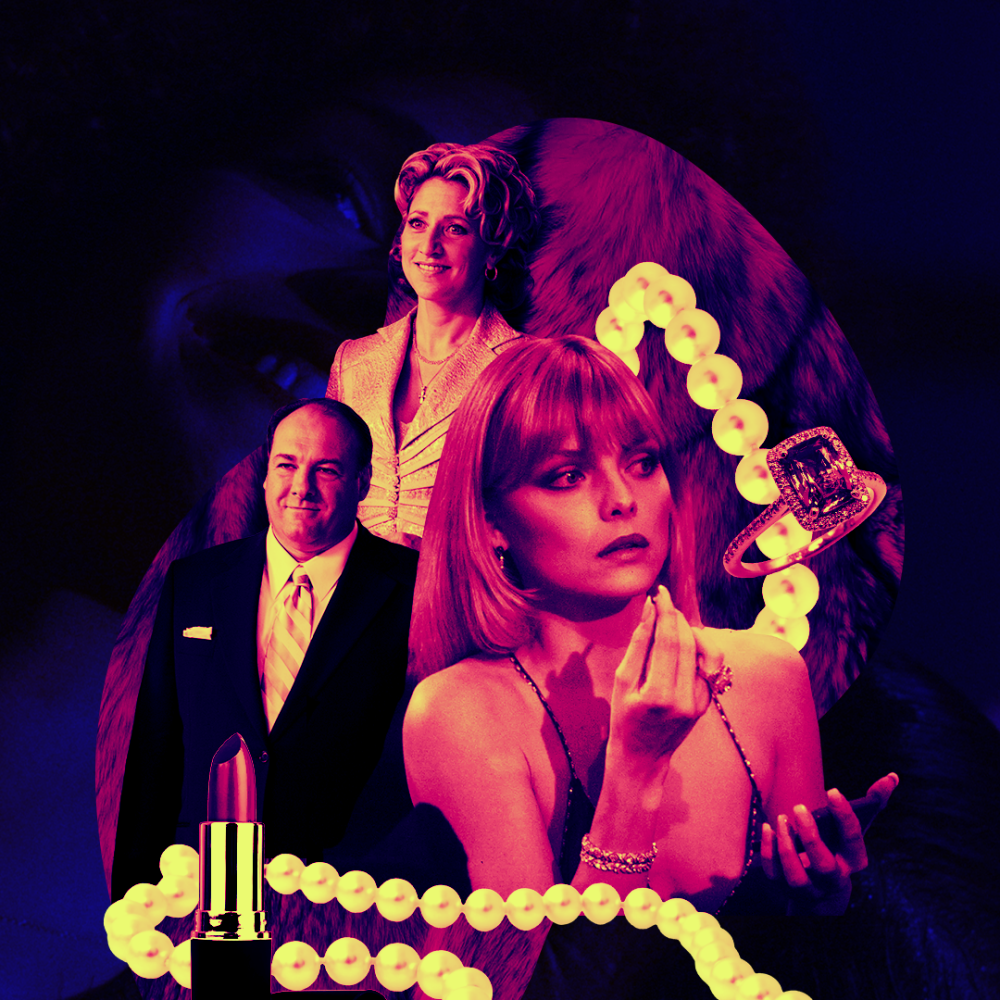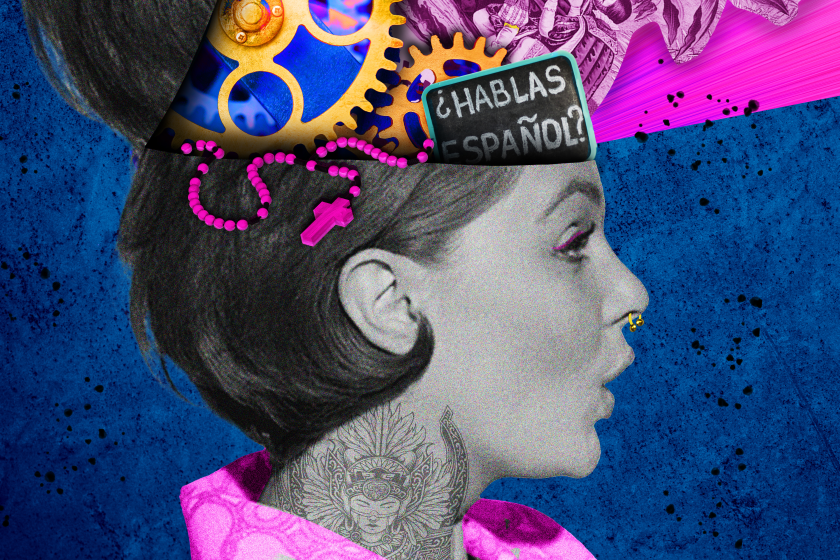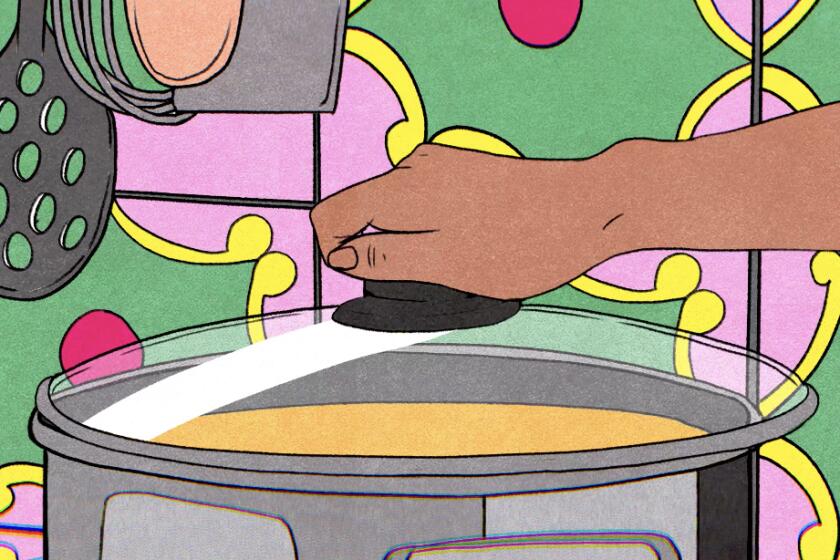
- Share via
A new trend has emerged on TikTok and Instagram as users have abandoned the minimalist “clean girl” aesthetic and are opting for the bold luxury of animal prints, statement-making gold jewelry, long acrylic nails and faux furs to achieve the “Mob Wife” aesthetic. Influencers are citing Carmela and Adriana from “The Sopranos” (played by Edie Falco and Drea de Matteo, respectively) along with women from the films “The Godfather” and “Scarface,” and VH1 reality series “Mob Wives” (R.I.P. Big Ang) as the blueprints for this look. For Latines, this aesthetic might be recognizable from the American mob movies we watched growing up and also from the women in our families and communities, if not ourselves.
It’s not a coincidence that there are resonances between Latine and Italian American aesthetics. Both groups immigrated to the U.S. and faced discrimination. Latines and Italians often still face racial discrimination, which impacts how people live, work, and are policed. Both groups have also been stereotypically assumed to have connections to organized crime, which the “Mob Wife” aesthetic makes direct reference to.

The excess that makes the “Mob Wife” aesthetic glamorous is what has also been leveraged against Latinas who wear similar styles to call them gaudy, overly sexual, classless, and cheap.
“If we think about the notion of femininity, it’s rooted in Victorian ideas of propriety, piety and domesticity,” explains Stacy Macías, professor of Women’s Gender and Sexuality Studies at Cal State Long Beach. “Those who have not had access to femininity are those who are working outside the home. The domain of femininity is the domain of whiteness.”
In this issue of De Los Reads, we explore six books that pave the way for a more inclusive and authentic expression of our Latino identities.
If fashion is the pieces of clothing that we wear, then style is how we wear those pieces together. While personal style is a reflection of one’s individual preferences, it’s refined by a larger web of relationships, experiences, and circumstances. The pieces that make up the “Mob Wife” aesthetic — the bold clothes, flashy jewelry, glossy nails and heavy makeup — all gesture to luxury and decadence.
But in the context of political struggle, limited financial means and social ostracization, these items hold a deeper significance. “Style has always signified a sense of ownership and empowerment over our body,” Macías said. “It’s one of the few ways that we can be self-determining in the way that we walk through an oftentimes violent world.”

Adriana Serrato, founder of Xipiteca, a Latina jewelry and couture streetwear apparel brand based in Los Angeles, echoes this idea of style as a mode or protection: “I would describe Latine style as an armor of resistance.”
“What the so-called ‘mob aesthetic’ and Latinx aesthetic — of which there are many — aesthetics of excess is just one of them,” says Catherine Sue Ramírez, professor of Latin American and Latino Studies at UC Santa Cruz. “What they have in common is an association with the un-rich.” The Mob Wife aesthetic has been characterized as nouveau riche, signaling new wealth and, perhaps, a misguided sense of what to do with it.
Melania Luisa Marte curates the De Los Latino poetry series, where poets define what love means for those with complicated histories of immigration, assimilation and survival.
“The truly wealthy hide their wealth,” Ramírez said.
In an article for the San Francisco Chronicle, writer Tony Bravo warns against glamorizing the criminality the trend invokes. He argues that the “Mob Wife” is a tragic figure whose excess “amplifies a false vision of Italian femininity.” Bravo joins in on calling the aesthetic tacky and cheap and dwells on the moral impurities the aesthetic resembles.
“The mob wife aesthetic is seen as a look that has been cultivated by illicit means,” Ramírez said. “It’s connected to this notion of deservingness — they didn’t acquire their wealth from an honest day’s work.” Ramírez explains that moral judgments on what is fair and rightfully earned based on work are often used against Latines and other marginalized groups, especially when it comes to “forms of privilege and power”: “Think about what people say about undocumented immigrants — they don’t deserve to be here because they didn’t get in line. They skipped the line.”

For Macías, the figure of the Welfare Queen, a usually Black or brown hyper-sexual woman whose excessive lifestyle is imagined as being funded by the state, also plays upon a racialized societal fear of deceit and dishonesty. “The Welfare Queen and how she operates is under constant surveillance,” Macías said. “[There’s this] idea that people should be saving or that they should spend [extra money] on something that is more resourceful, or practical, or logical.”
In terms of style, the Welfare Queen, like the Mob Wife, is often caricatured as wearing big hair, flashy clothes, and gaudy jewelry.
“It can look as if it’s expensive. But... people are always finding deals, trading clothes, making their own or shopping at swap meets,” Macías says.
Serrato echoes this idea, noting that often Latine style is “a blend” of what we see and what was once worn by “our moms, tias, primas and sisters.” This aesthetic is actually born from working-class struggle and, as Serrato describes, is an “expression of resilience and strength.”
“I think we’re reaching for humanity,” Macías said. “[Style] is a profound way to express one’s humanity outside the terms of our racialized class existence that overdetermines us.”
Aneliza Ruiz is a doctoral student in ethnic studies at UC Berkeley from East Los Angeles. She writes a pop culture newsletter called 23 minutes of agony and a zine called Agony Hour.
More to Read
The Latinx experience chronicled
Get the Latinx Files newsletter for stories that capture the multitudes within our communities.
You may occasionally receive promotional content from the Los Angeles Times.








